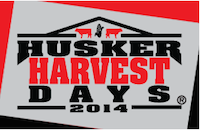Cogent3D has released its newest version of iCropTrak and the application now features “on-board” processing for mobile analytics and is helping to take precision ag one step futher. This technology is a bit different than many that are based in the “cloud” or on your desktop. According to Cogent3D, iCropTrak version 5 performs all the  processing needed on your iPad and in the field or wherever you need to be even without a wireless connection.
processing needed on your iPad and in the field or wherever you need to be even without a wireless connection.
So how does it work? Imagine this scenario: you are standing in your field, reviewing your data, stacking it up and analyzing it with correlation graphs to visualize how your chemical application has impacted your projected yield. Then you walk to a spot in your field and inspect where your analysis shows potential for lower yield. This is exactly what you can do and more with iCropTrak version 5.
Cogent3D considers this a technological leap in capturing and analyzing farming data and explains that this technology is considered “disruptive” technology. In other words, distruptive technology describes a process by which a product or service takes root in simple applications at the bottom of the market and then moves up until it takes root, or displaces other technologies. An example is the desktop computer and initial data software. In this case, Cogent 3D believes that the history of computer technology is repeating itself with the farming industry from standalone pc programs to cloud-based web services and now to native mobile applications.
iCropTrak 5 has some new features. According to Cogent3D, it’s the first of the next generation mobile farming applications to maximize a mobile device’s power, exploiting it and its performance to execute some of the most complex processing tasks, for example, multi-layer and multi-year management zone creation or colorization of 10’s of thousands of tractor data points on a field to provide visualization of your data so it makes sense to you.
The company is confident iCropTrak 5 will change how agronomists and sales teams interact with their clients and perform their jobs. With iCropTrak 5 an agronomist can load data, stand in a field with their client or sit with them at their kitchen table, show them how their prescriptions and recommendations have impacted their fields using quantifiable information and make informed decisions based on solid data from a device that sits in the palm of your hand.
To learn more about iCropTrak 5, visit www.iCropTrak.com and also view the entire product press release here.















